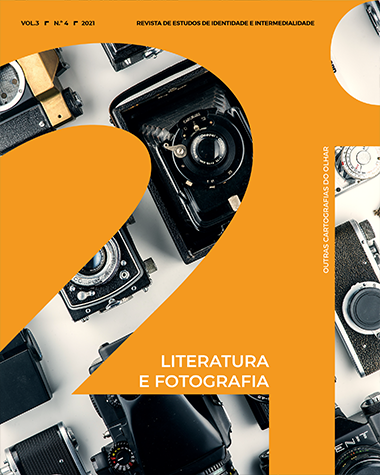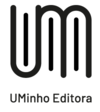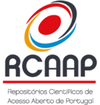Prática fotográfica comtemporânea: Da paisagem a modos expandidos de representaçāo de lugar
DOI:
https://doi.org/10.21814/2i.3455Palavras-chave:
Prática fotográfica contempor´ânea, Lugar, Paisagem, Rio Waikato, Aotearoa New ZealandResumo
A prática fotográfica contemporânea evoluiu para um amplo campo de possibilidades, um fluxo de modos representacionais que representam emoções, experiências e sentimentos. Paralelamente, a profundidade e as camadas dos lugares oferecem um desafio estimulante para pesquisadores e artistas que desejam explorar criativamente as nuances da terra e da natureza, bem como a “realidade” multissensorial e espacial dos lugares. O Rio Waikato é meu local de pesquisa, localizado na região central da Ilha Norte de Aotearoa, Nova Zelândia. Eu me baseio na prática e na teoria da fotografia contemporânea para desenvolver abordagens multimodais para o meu local de pesquisa, expandindo modos objetivos de fotografia de paisagem e representação de lugar. Eu traço uma linha do tempo a partir da prática inicial da fotografia de paisagem, particularmente durante a colonização britânica na Nova Zelândia, justapondo minha prática fotográfica como uma contra-abordagem aos modos eurocêntricos de representação do lugar. Isso é informado por cosmologias locais Waikato Māori e leituras mais contemporâneas sobre teoria de lugar. Como resultado, conceitualizei um referencial teórico em torno da noção de imaginários de lugar como uma plataforma criativa para o desenvolvimento de modalidades fotográficas expandidas.
Downloads
Referências
Anderson, B., & Harrison, P. (2010). The Promise of Non-Representational Theories. In Taking-Place: Non-Representational Theories and Geography: Non-Representational Theories and Geography. Taylor & Francis Group. http://ebookcentral.proquest.com/lib/aut/detail.action?docID=539832
Belich, J. (1986). The New Zealand Wars and the Victorian interpretation of racial conflict. Auckland University Press.
Bender, B. (1993). Landscape: Politics and perspectives. Berg.
Boast, R., & Hill, R. S. (Eds.). (2009). Raupatu: The confiscation of Māori land. Victoria University Press.
Bright, S. (2011). Art photography now (2nd ed.). Thames & Hudson.
Cook, D. B., Puke, W., & Valentine, J. (2011). River/road: Journeys through ecology. Rim Books.
Cosgrove, D. (1985). Prospect, perspective and the evolution of the landscape idea. Transactions of the Institute of British Geographers, 10(1), 45–62. https://doi.org/10.2307/622249
Dench, S. (2011a). Invading the Waikato: A postcolonial re-view. New Zealand Journal of History, 45(1), 33–49.
_____ (2011b). Representing the Waikato: Photography and colonisation. Journal of New Zealand Literature, 29(2), 66–88.
Edge, S. (2013). Photography and poststructuralism: The indexical and iconic sign system. In B. Dillet, L. Mackenzie, & R. Porter (Eds.), Edinburgh companion to poststructuralism (pp. 311–332). EUP.
Edwards, E. (2011). Tracing photography. In J. Ruby & M. Banks (Eds.), Made to be seen: Perspectives on the history of visual anthropology (pp. 159–189). University of Chicago Press. http://site.ebrary.com/lib/alltitles/docDetail.action?docID=10519583
_____ (2012). Objects of Affect: Photography Beyond the Image. Annual Review of Anthropology, 41, 221–234. JSTOR. http://www.jstor.org/stable/23270708
_____ (2015). Anthropology and Photography: A long history of knowledge and affect. Photographies, 8(3), 1–18. https://doi.org/10.1080/17540763.2015.1103088
Fenton, R. (1860). The Long Walk Windsor [Photograph]. www.royalcollection.org.uk/sites/default/files/collection-online/f/1/435998-1387192544.jpg
Fisher, M. (2016a). ‘I riro whenua atu me hoki whenua mai’: The return of land and the Waikato-Tainui raupatu settlement. Journal of New Zealand Studies, 23, 19–36.
_____ (2016b). The politics of history and Waikato-Tainui’s Raupatu Treaty Settlement. New Zealand Journal of History, 50(2), 68–89.
Flusser, V. (2000). Towards a philosophy of photography. Reaktion.
Fontcuberta, J. (2015). The Post-Photographic Condition | Anti-Utopias (S. Bors, Interviewer) [Interview]. https://anti-utopias.com/newswire/post-photographic-condition/
Ghirri, L. (2017). The complete essays 1973-1991. MACK.
Glowczewski, B. (2012). From academic heritage to Aboriginal priorities: Anthropological responsibilities. Revista de Antropologia Da UFSCar, 4(2), 6–19. https://researchonline.jcu.edu.au/33208/1/33208%20Glowczewski%202011.pdf
Hill, R. (2018). South of the Rising Sun / Whakatetonga o te Whitinga o te Rā [Photography Installation].
_____ (2019). Place imaginaries: Photography and place-making at Te Awa River Ride [Thesis, The University of Waikato]. https://researchcommons.waikato.ac.nz/handle/10289/12797
_____ (2021). Contemporary Photography Practice:Expanded Methidology and Critical Ways of Thinking. Design, Art and Technology Journal, 6(2). https://datjournal.anhembi.br/dat/issue/view/16/18
Ingersoll, K. E. (2016). Waves of knowing: A seascape epistemology. Durham; London Duke University Press.
Jazeel, T. (2012). Postcolonialism: Orientalism and the geographical imagination. Geography, 97(1), 4–11. http://www.jstor.org/stable/24412174
_____ (2019). Postcolonialism. Routldge.
Kapā’anaokalāokeola Nākoa Oliveira, K.-A. R.-M. (2014). Ancestral places: Understanding Kanaka geographies. Oregon State University Press.
King, C. M., & Roa, T. om. (2015). The Maori of the Central North Island before 1860. In C. M. King, D. J. Gaukrodger, & N. A. Ritchie (Eds.), The drama of conservation: The history of the Pureora Forest, New Zealand (pp. 43–66). Department of Conservation, NZ & Springer International. https://doi.org/10.1007/978-3-319-18410-4_3
Kolenda, K. (2019). Aestheticising the Post-Industrial Debris: Industrial Ruins in Contemporary British Landscape Photography. Revue LISA/LISA e-Journal. Littératures, Histoire Des Idées, Images, Sociétés Du Monde Anglophone – Literature, History of Ideas, Images and Societies of the English-Speaking World, vol. XVII-n°1, Article XVII-n°1. https://doi.org/10.4000/lisa.11083
Kossoy, B. (2001). Fotografia & história (2a edição revista.). Ateliê Editorial.
Massey, D. B., Allen, J., & Sarre, P. (Eds.). (2007). Human geography today. Polity Press.
Mataira, K. (1983). The river which ran away. Ahuru Press.
Muru-Lanning, M. (2016). Tupuna Awa: People and politics of the Waikato River. Auckland University Press.
Park, G. (2006). Theatre country: Essays on landscape and whenua. Victoria University Press.
Peden, R., & Holland, P. (2015). Settlers tranforming the open country. In E. Pawson & T. Brooking (Eds.), Making a new land: Environmental histories of New Zealand (pp. 89–105). Otago University Press.
Puke, W. (2011). The Te Araroa Waikato River Walkway investigation report. NaMTOK Consultancy.
Radcliffe, S. A. (2017). Decolonising geographical knowledges. Transactions of the Institute of British Geographers, 42(3), 329–333. https://doi.org/10.1111/tran.12195
Salmond, A. (2017). Tears of Rangi: Experiments Across Worlds. Auckland University Press.
Schwartz, J. M. (1996). The Geography Lesson: Photographs and the construction of imaginative geographies. Journal of Historical Geography, 22(1), 16–45. https://doi.org/10.1006/jhge.1996.0003
Schwartz, J. M., & Ryan, J. R. (Eds.). (2003). Picturing place: Photography and the geographical imagination. I.B. Tauris.
Setten, G. (2010). Landscapes of gaze and practice. Norsk Geografisk Tidsskrift - Norwegian Journal of Geography, 57(3), 134–144. https://doi.org/10.1080/00291950310002116
Shore, R. (2014). Post-photography: The artist with a camera. Laurence King Publishing.
Smith, L. T. (2012). Decolonizing methodologies: Research and indigenous peoples (2nd ed). Zed Books.
Stewart, P. J., & Strathern, A. (Eds.). (2003). Landscape, memory and history: Anthropological perspectives. Pluto.
Te Aho, L. (2008). Contemporary issues in Maori law and society: The tangled web of treaty settlements, emissions trading, Central North Island Forests, and the Waikato River. Waikato Law Review: Taumauri, 16, 229–250. http://search.informit.com.au.ezproxy.waikato.ac.nz/documentSummary;dn=691109257960927;res=IELHSS
Thrift, N. J. (1996). Spatial formations. Sage.
_____ (2008). Non-representational theory: Space, politics, affect. Routledge.
Tūrangawaewae Board of Trustees. (2011). Tōku Tūrangawaewae: Our stories celebrating our 90th year, 12 August 2011. Tūrangawaewae Trust Board.
Waikato Raupatu Lands Trust. (2008). Waikato Raupatu River Settlement: Information package, August 2008. Author.
Waterton, E. (2019). More Than Representational Landscapes. In P. Howard, I. Thompson, M. Atha, & E. Waterton (Eds.), The Routledge Companion to Landscape Studies (2nd ed., pp. 91–101). Routledge. https://doi.org/10.4324/9781315195063
Wells, L. (Ed.). (2004). Photography: A critical introduction (3rd ed.). Routledge.
_____ (2011). Land matters: Landscape photography, culture and identity. I. B. Tauris.
Whitridge, P. (2004). Landscapes, houses, bodies, things: “Place” and the archaeology of Inuit imaginaries. Journal of Archaeological Method & Theory, 11(2), 213–250. https://doi.org/10.1023/B:JARM.0000038067.06670.34
Downloads
Publicado
Como Citar
Edição
Secção
Licença
Direitos de Autor (c) 2021 Rodrigo Hill

Este trabalho encontra-se publicado com a Creative Commons Atribuição-NãoComercial 4.0.


.jpg)










